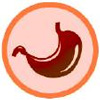- In yellow fever, the liver and kidney’s involvement is seen much more.
- In cases of severity, jaundice might develop with black vomiting, epistaxis (bleeding from the nose).
- Also, the patient might suffer from anuria (suppression of urine), shock, stupor (lethargy) and coma.
Vaccination for Yellow Fever
 Thermometer
ThermometerThe vaccine is administrated subcutaneously at the insertion of deltoid in a single dose of 0.5 ml irrespective of age. Immunity begins to appear on the 7th day and lasts for more than 35 years, and possibly for life. However, WHO recommends re–vaccination after 10 years for international travel. Although no teratogenic effects have been ascribed to the yellow fever vaccine, immunization should be avoided during pregnancy if there is no risk of exposure. Similarly, immunization may be postponed until the child is one year old, if there is no risk of exposure to the yellow fever virus. Mild post–vaccinal reactions (e.g. myalgia, headache and low–grade fever), may occur in 2 to 5% of the vaccines, about five to 10 days after vaccination. Anaphylaxis is very rare, occurring mainly in those allergic to eggs. Cholera and yellow fever vaccines together or within three weeks, interfere with each other. So, whenever possible, they should be administered about three weeks or more apart.
Vector Control
The other principal method of preventing yellow fever is through intensive vector control. The objective of vector control is to reduce the vector population rapidly to the lowest possible level and thereby stop or reduce transmission quickly. This approach has proved successful in the Americas to prevent urban epidemics.
The vector, the Aedes mosquito is peridomestic in habits. It can be controlled by vigorous anti–adult and anti–larval measures. The long term policy should be based on organized “Source reduction” methods (e.g. elimination of breeding places) supported by health education aimed at securing community participation. Personal protection against contact with insects is of major importance in integrated vector control. Such protection may include the use of repellents, mosquito nets, mosquito coils and fumigations mats.
Surveillance of Yellow Fever
A program of surveillance (clinical, serological, histopathological and entomological) should be instituted in countries where the disease is endemic for the early detection of the presence of the virus in human populations or in animals that may contribute to its dissemination.
For the surveillance of the Aedes mosquitoes, the WHO uses an index known as the Aedes aegypti index. This is a house index and defined as “The percentage of houses and their premises, in limited, well defined areas, showing actual breeding of the Aedes aegypti larvae”. This index should not be more than 1% in towns and seaports in endemic areas to ensure freedom from yellow fever.
International measures
India is a yellow–fever “Receptive” area, that is, “An area in which yellow fever does not exist, but where conditions would permit its development if introduced.” The population of India is unvaccinated and hence particularly susceptible to yellow fever. The missing link in the chain of transmission is the virus of yellow fever which does not seem to occur in India.
The virus of yellow fever could get imported into India in two ways
- Through infected travelers (clinical and sub–clinical cases).
- Through infected mosquitoes.
- Travelers
All travelers (including infants) exposed to the risk of yellow fever or passing through endemic zones of it, must possess a valid international Certificate of Vaccination against yellow fever, before they are allowed to enter yellow fever “Receptive” areas. If no such certificate is available, the traveler is placed in quarantine, in a mosquito–proof ward, for six days from the date of leaving an infected area. If the traveler arrives before the certificate becomes valid, he is isolated till the certificate becomes valid. - Mosquitoes
Aircraft and ships arriving from endemic areas are subjected to aerosol spraying with prescribed insecticides on arrival for destruction of insect vectors. Further, airports and seaports are kept free from the breeding of insect vectors over an area extending at least 400 meters around their perimeters. The Aedes aegypti index is kept below 1.
India and most other countries require a valid certificate of vaccination against yellow fever from travelers coming from infected areas. A few countries (including India) require this even if the traveler has been in transit. It is up to each country to decide whether a certificate of vaccination against yellow fever shall be required for infants under one year of age, after weighing the risks to the infant arising from vaccination. In this regard, India requires vaccination for infants too. The validity of the certificate begins two days after the date of vaccination and extends up to 10 years.
Re–vaccination performed before the end of validity of the certificate renders the certificate valid for a further period of 10 years starting on the day of re–vaccination. For the purpose of international travel, the vaccination must be given at an officially designated center and the certificate must be validated with the official stamp of the Ministry of Health, Government of India. The certificate is valid only if it conforms to the model prescribed under international health regulations. On the other hand, for their own protection, travelers who enter endemic areas should get themselves vaccinated against yellow fever.
Reference centers
The yellow fever reference centers in India are:
- National Institute of Virology, Pune.
- Central Research Institute, Kasaub.







